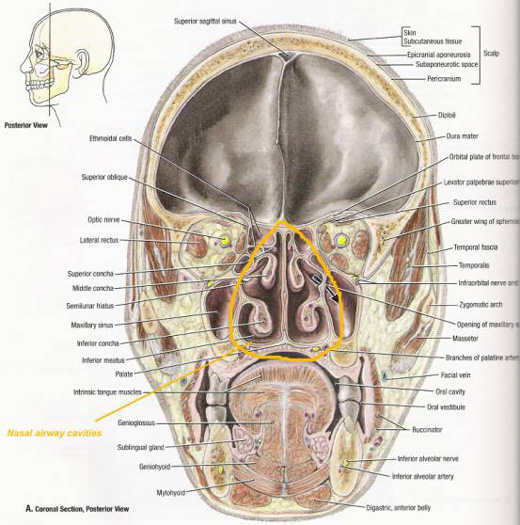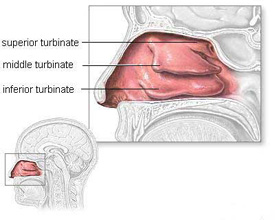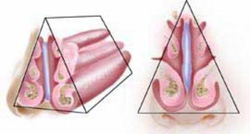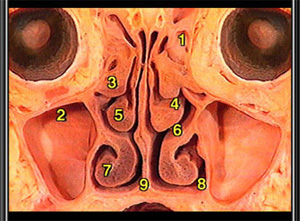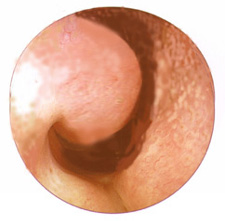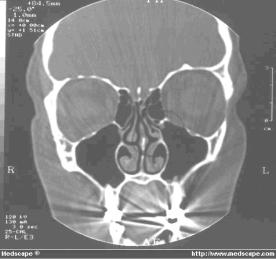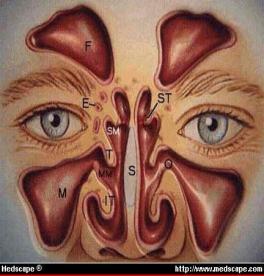Turbinate Anatomy & Physiology
*** Before you begin, it is advised to go through the “NASAL CONCHAE (TURBINATE BONES)” section from the animated presentation of the nose (press on “nose tutorial” from the menu bar, and choose that section). After reviewing that section continue here.
What Are The Turbinates?
From the anterior (front – looking from the nostrils) they resemble fine shaped tear drops, hanging in the cavities, connected by their narrowest part to the lateral wall. Study figures 2 – 6:
|
Fig 2: Front Mid face Cross Section: 3 – right superior turbinate, 5 – right middle, turbinate, 7 – right inferior turbinate. |
Fig 3: right inferior turbinate (live, endoscope). |
|
Fig 4: front (coronal view) section CT scan of nasal cavities. One can see how nicely the turbinates, especially the Inferior ones, curve and roll like a sea-shell, from a front (anterior) view. |
Fig 5: coronal drawing of nasal cavities. S-septum, ST- superior turbinate, M-maxillary sinus, IT- inferior turbinate, T-middle turbinate, MM-middle meatus, F-frontal sinus, SM-superior meatus. E – ethmoid sinus. |
An example of what a doctor can see when performing a regular anterior rhinoscopy examination (without an endoscope):
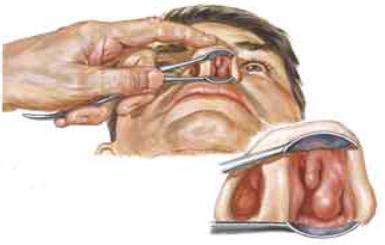
Fig 6: left sided inferior & middle turbinates
The most important ones, in terms of directing and controlling airflow and maintaining healthy nasal functions, are the Inferior (which are also the largest) and the Middle ones (the second largest). The superior turbinates protect the olfactory bulbs at the roof of the nose (just under the bone barrier between the brain and the nasal cavities – the “Cribriform Plate”) and harbors some smell receptors too.
